
I enjoy zucchini as much as the next person, and you have to admit that pattypan squash is pretty darn cute. But when it comes to filling that squash-shaped hole in my heart, er, stomach, it doesn’t happen until the fall.
As lovely as summer squash is, I’m 100% a winter squash fan.
These thick-skinned cousins to summer squash have a lot going for them. Too often, though, folks pass them up at the store or farmer’s market. They’re either intimidated by their size or have no idea how to cook them.
In this piece, I hope to share my love of winter squash with you. And show you how easy they are to cook with (yes, even the big ones) and how versatile these hardy veggies are. But first, let’s take a look at a few reasons why they’re so great.
Winter squashes have an amazing shelf life.
When cured and stored properly, winter squash can last for months, sometimes feeding you through the whole winter.
(And for that, you’ll want to read Cheryl’s article. She’ll get you sorted out.)
How To Cure and Store Winter Squash and Pumpkins
And that’s just before you cook them. Mashed or cubed, they freeze beautifully.
If you read my article about freezing butternut squash, you’ll find that you can use the same methods for nearly all other winter squash too.
The “No-Peel” Way To Freeze Butternut Squash & 2 More Methods
They’re also quite versatile in the kitchen.
Winter squash runs the gamut when it comes to what you can do with it. The main course, soup, salad, a side, pasta, dessert, bread – you name it, and you can probably make it using winter squash. Even better, you can usually substitute one for the other as they all have similar flavor and texture.
The flesh of most winter squash is slightly sweet and nutty (words often used to describe me, too); the start of many comforting fall dishes.
And they’re just pretty.
While most of us wouldn’t decorate our tables or front porches with zucchini, winter squash doubles as beautiful fall decor around your home until you use them.
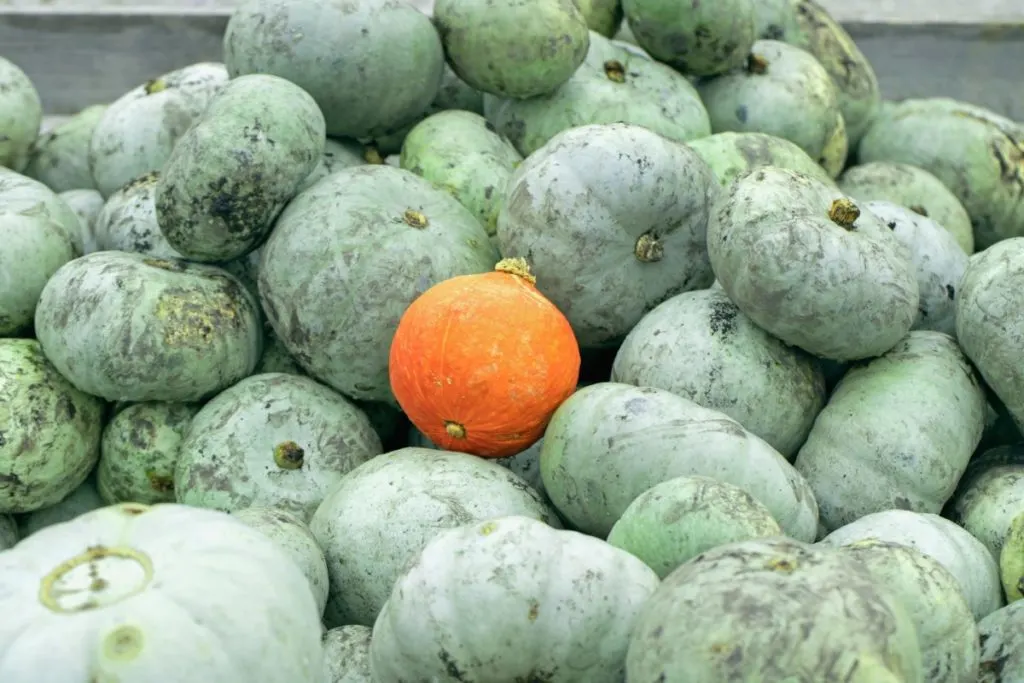
Getting to Know Winter Squash
I think it’s fair to assume most everyone is pretty well acquainted with the good ol’ pumpkin, that staid and steady favorite. But I thought we would take a look at a few other winter squashes. Perhaps you’ve seen them in the market and thought, “Hmm, what the heck do you do with this thing?”
Another fair question about winter squash is often, “How am I supposed to cut this thing open?” I’ve got you covered.
How to Cut Winter Squash
Winter squash has a thicker rind than zucchini or a straight-neck yellow squash, but that’s because the summer squash is picked early and small. If you’ve ever found one of those giant zucchinis in your garden that hid under the leaves, you’ll probably notice its skin is much tougher than a normal-sized zucchini.
Getting to the delicious inside of winter squash can feel a little intimidating for many home cooks. But it only takes cutting a few squashes open before that disappears.
You’ll want a good, sharp chef’s knife and a large cutting board for any of these.
Be sure the squash and your cutting surface are dry. Because of their awkward shapes, any moisture can make for slippery squash.
For acorn or carnival squash, the easiest way to cut them is to snap the stem off, flip it upside down and slice the squash in half.
For longer squash like delicatas and spaghetti, you’ll want to place them on the cutting board lengthwise and cut them lengthwise as well. I find it easier to hold one end of the squash with my non-dominant hand and then start my cut in the middle of the squash – this allows me to hold it steady. Then I simply turn the squash and finish cutting through the other half.
Cutting “the big ones” can sometimes take a bit more effort.
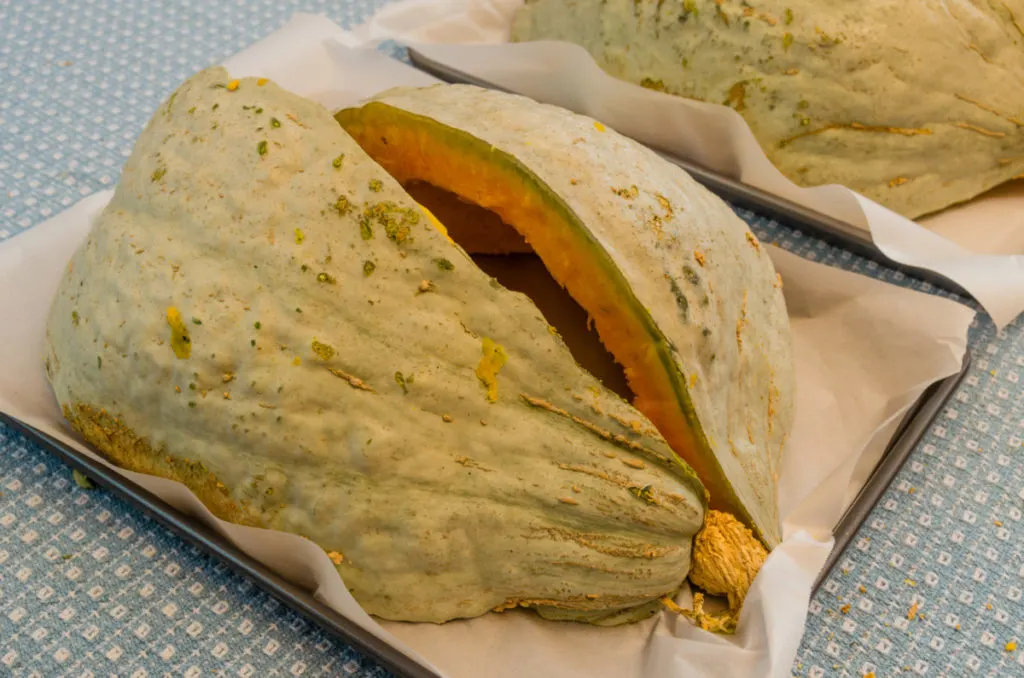
Their skin is generally thicker than the smaller varieties, and their sheer size often causes the knife to get pinched. To avoid this, don’t push your knife into the squash more than halfway, and make smaller cuts.
Once you’ve got it started, slide a butter knife into the cut, up to the handle. The butter knife will keep the cut you’re making open so it won’t pinch the chef knife.
Hubbards can be the most difficult to cut; if you find that your chef knife isn’t cutting it (Heh, sorry, I had to.), then all bets are off, and it’s time to fight dirty. I have used a camp ax in the past and chopped them in half, much as you would split a log. You can also smash them on a rock or concrete surface to break them open.
If you have teenagers enlist their help, they like breaking stuff.
If the squash gets a little dirt on it, you can easily rinse it off. Trust me; they are well worth the effort.
Now that you know how to get to the good stuff, I’d like to make a few introductions. We’ll get you cooking as many winter squash as you can get your hands on.
1. Acorn Squash
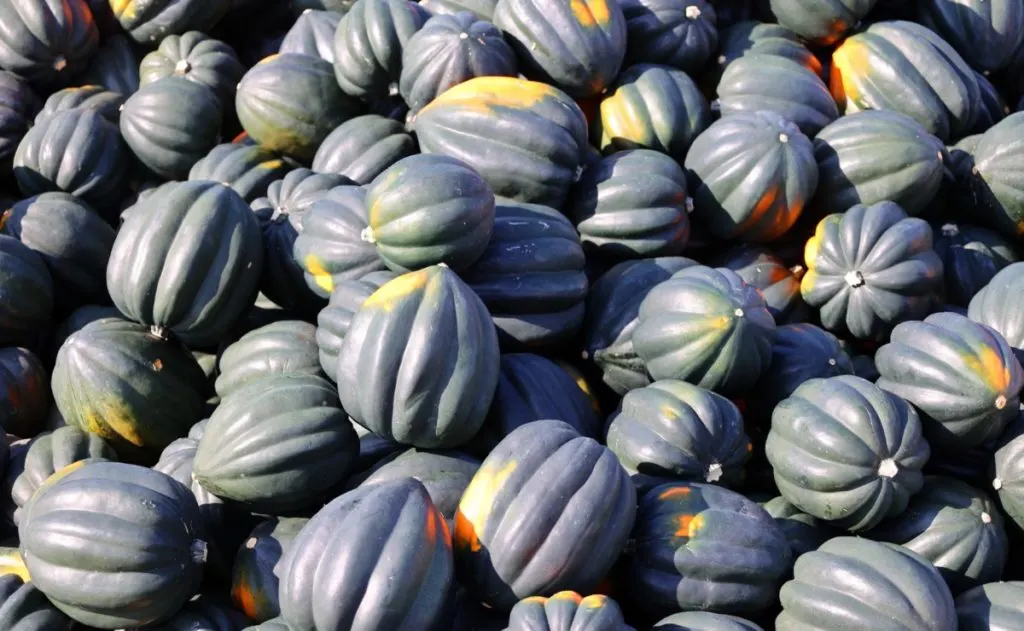
If you’ve dabbled beyond the pumpkin, it’s probably been with this squash right here. The acorn squash is a great little winter squash. Its size and shape make it just perfect for stuffing.
Cut it in half vertically, and you’ve got two tasty little squash-dishes ready to be filled with all kinds of sweet and savory fillings.
You can start by giving this wild rice stuffed acorn squash recipe a try from Beth at BudgetBytes. I’m a huge fan, and her recipes have kept my grocery budget looking good for years.
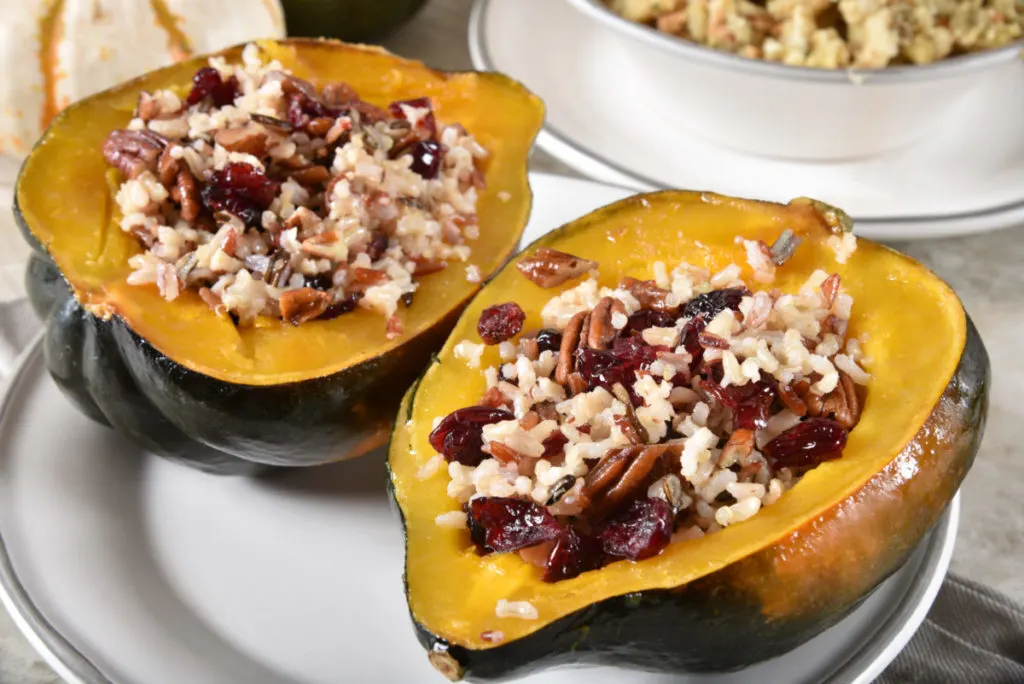
For a one-person meal, I like to slice the top off horizontally, about an inch down from the stem. Then I’ll slice enough off the bottom so the acorn squash will sit up straight. Again, fill these with your choice of tasty ingredients and bake it all up a perfect fall meal.
2. Butternut Squash
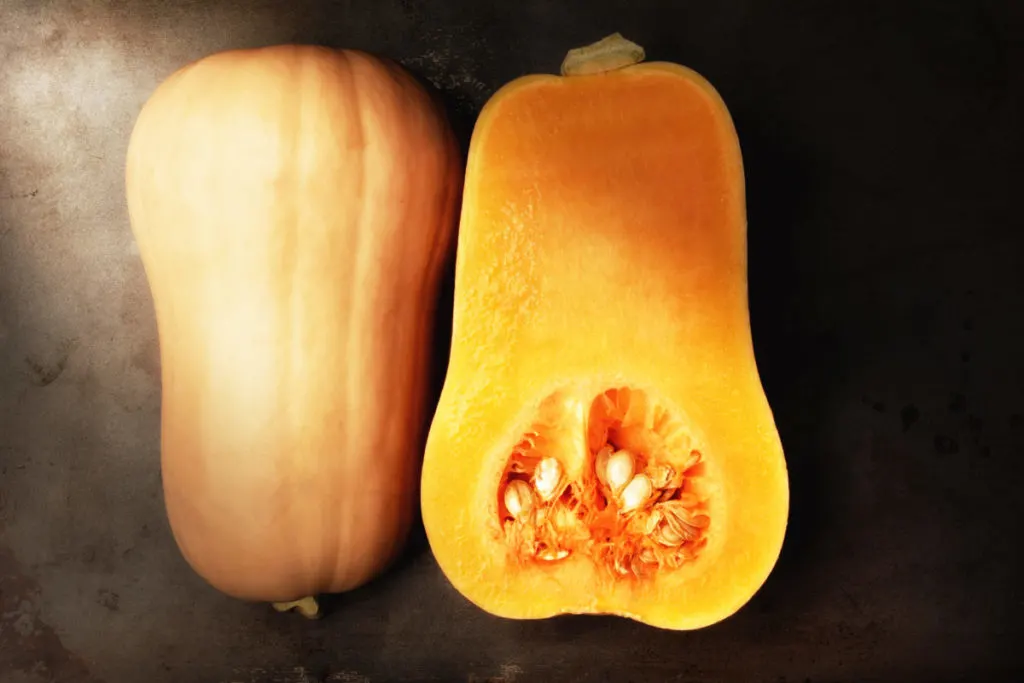
Butternut is another well-known winter squash. Over the past few years, it seems everyone has fallen in love with butternut squash soup. It’s a delicious and hearty winter staple in our house.
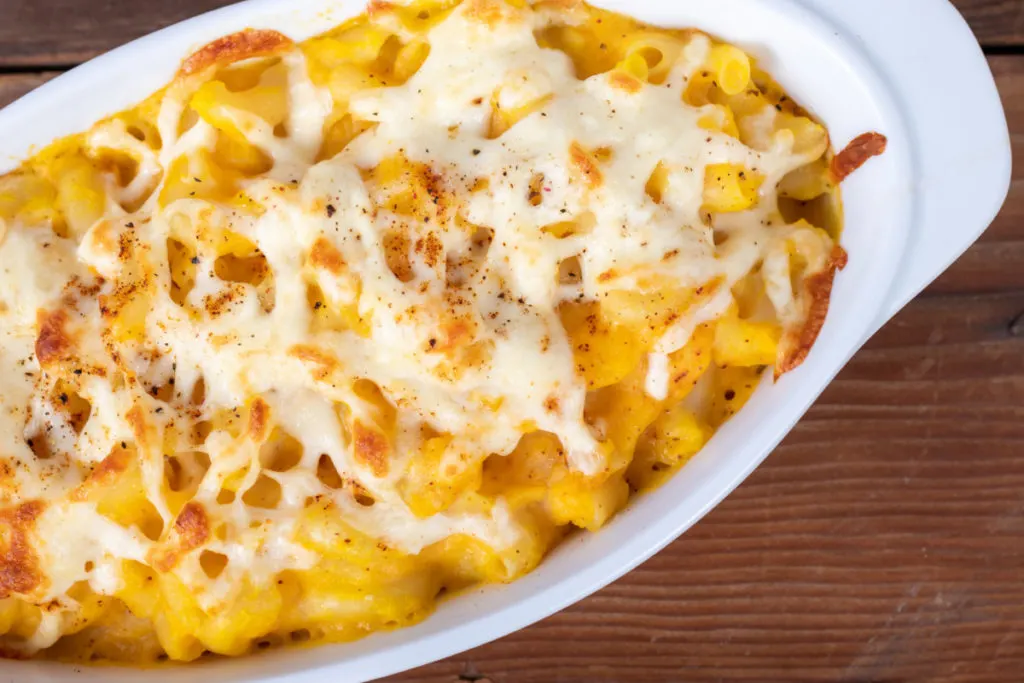
Instead of soup, why not make a casserole dish of butternut squash macaroni and cheese. This classic comfort food gets infused with tons of fall flavor with the addition of butternut squash puree.
3. Pumpkin
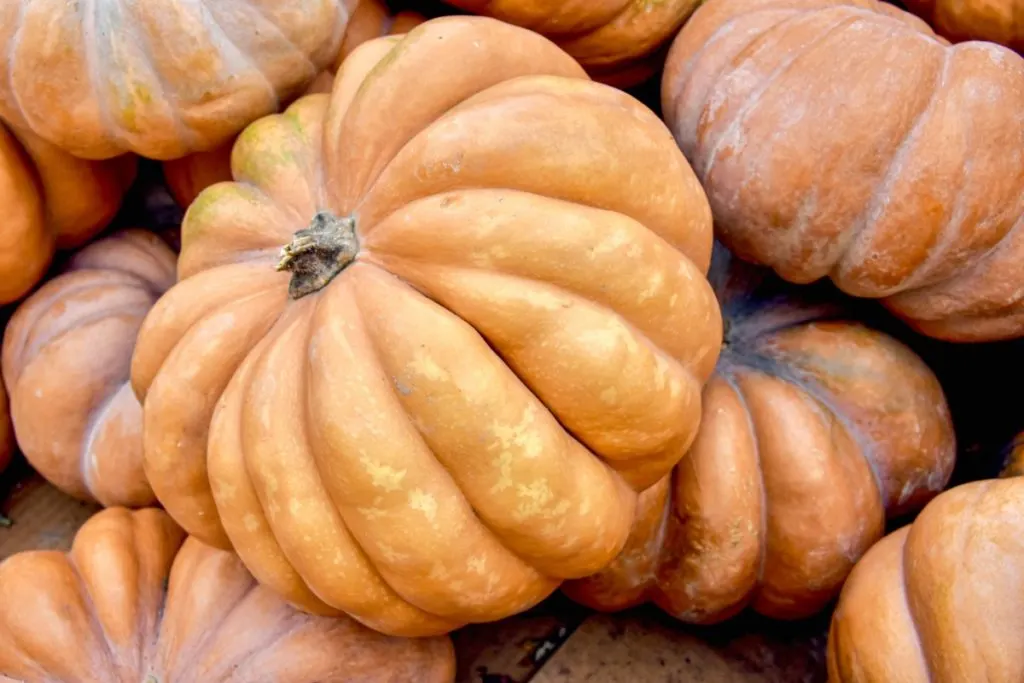
Pumpkin is the king of winter squash and probably the one everyone is most familiar with. But even with a classic, there’s room to try new things. Grab a cheese wheel pumpkin instead of the usual orange pie pumpkins. I think you’ll be surprised by their superior flavor.
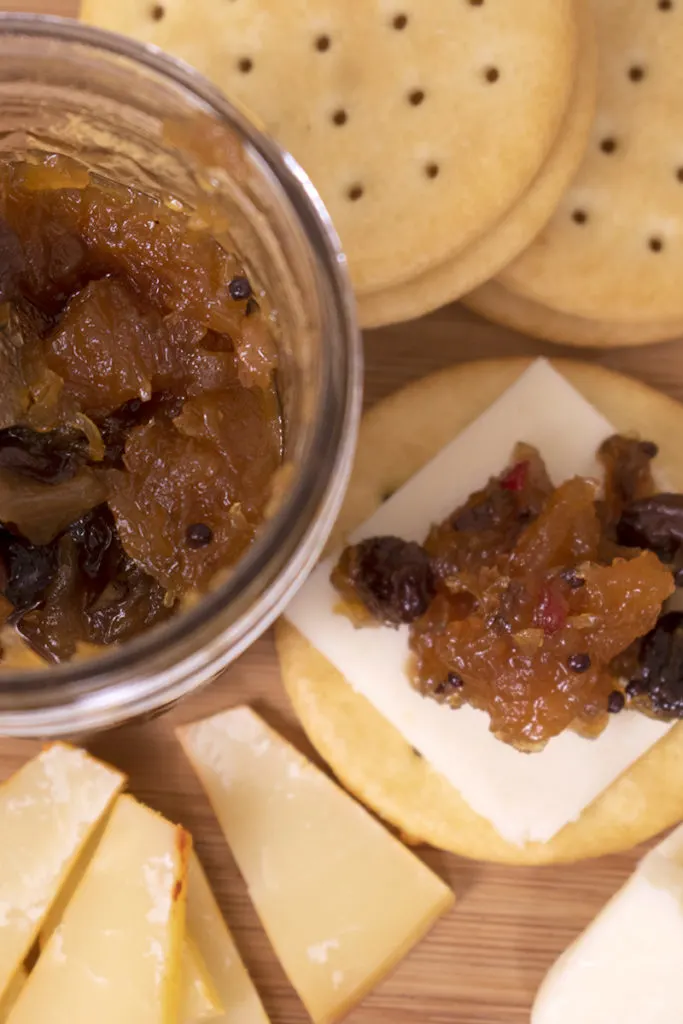
We’ve all got a good pumpkin pie recipe we reach for every Thanksgiving, so how about giving my spicy ginger pumpkin chutney a try. It’s the perfect addition to any charcuterie or cheese board.
4. Carnival Squash
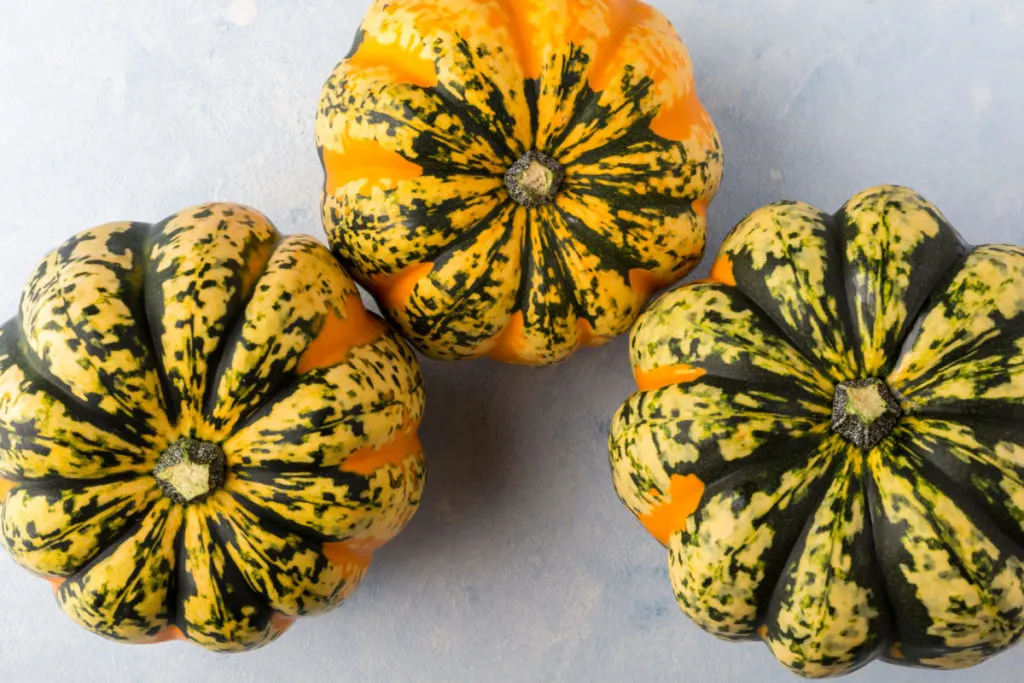
I know what you’re thinking; these look an awful lot like acorn squash. And you would be right. The carnival squash is nearly identical to the acorn squash in size, shape and flavor. Think of the carnival squash as the acorn squash’s flamboyant cousin.
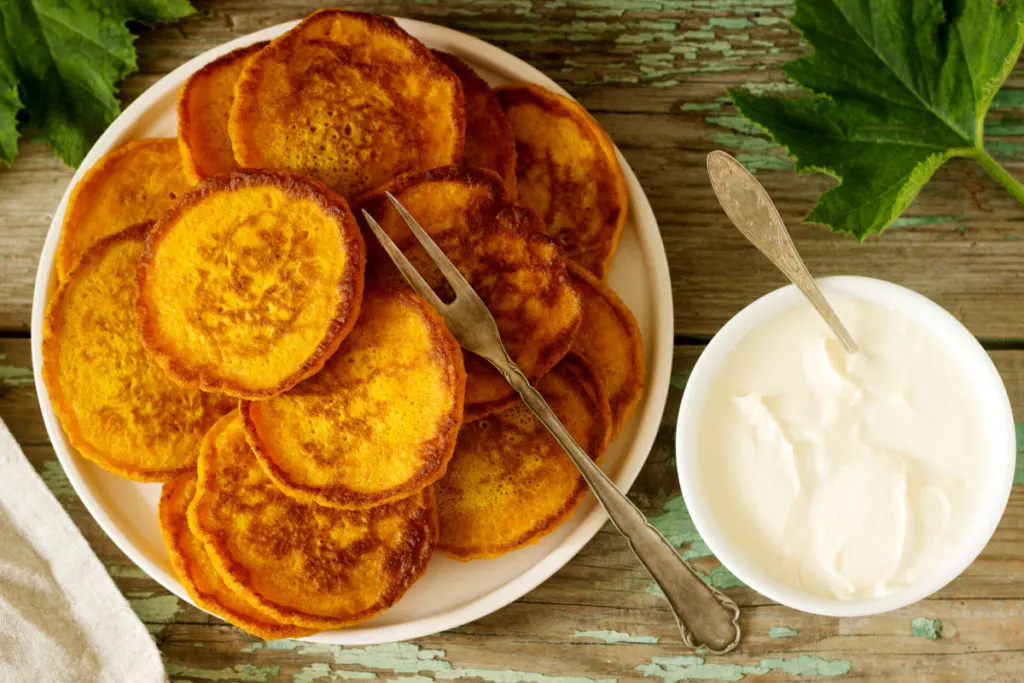
Squash for breakfast? Absolutely. And the delightful carnival squash is the perfect candidate for pancakes. Whip up a batch of these carnival squash pancakes for brunch.
5. Delicata
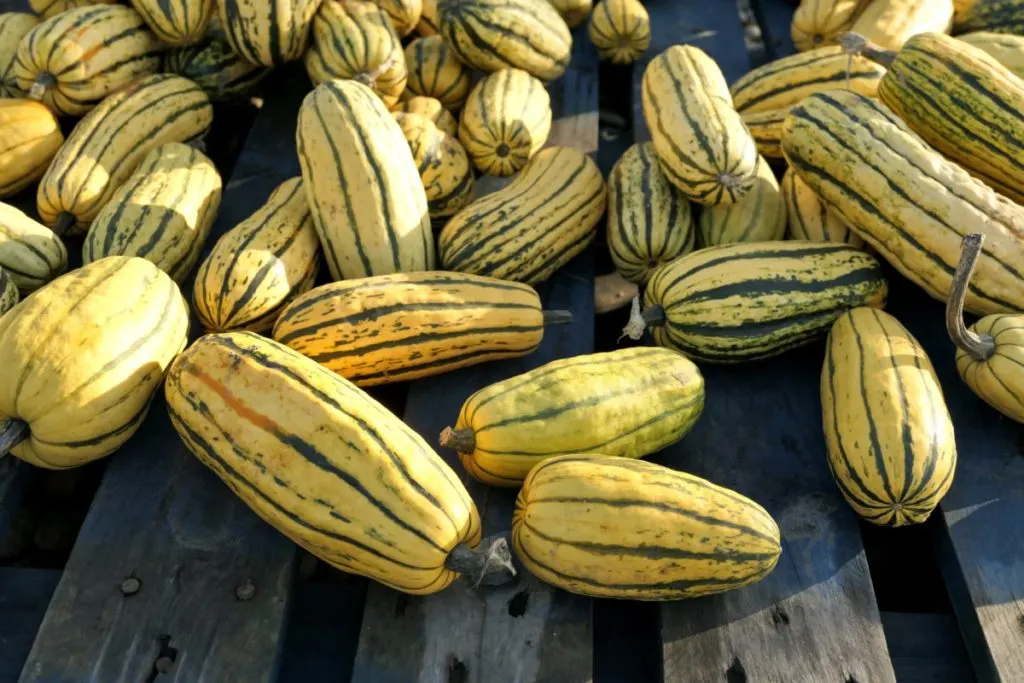
Delicata squash is a well-kept secret, although I seem to see them popping up more often in farmers’ markets and grocery stores. Their popularity is growing! You’re probably wondering what makes them so popular. Delicatas have much thinner skin than most winter squash, meaning you don’t need to peel them or scrape the flesh out. You can eat them, skin and all.
They’re wonderful sliced into rings and roasted. Not only do they taste great, but they look lovely when you serve them.
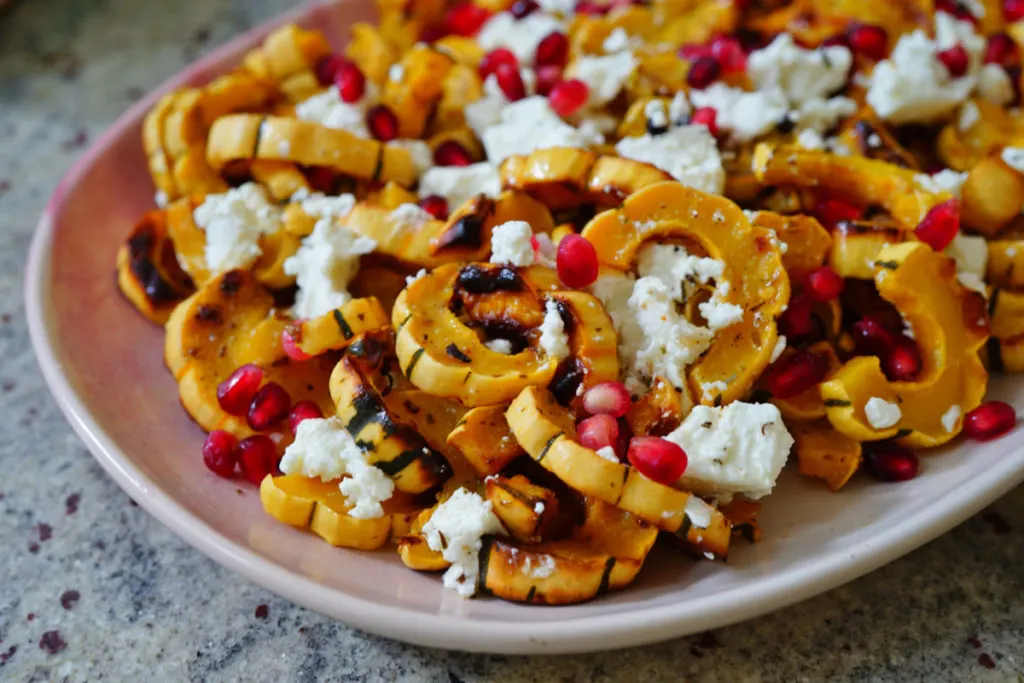
Delicatas also make another great candidate for stuffing. Cookie & Kate have a great recipe for roasted delicata squash stuffed with goat cheese and arugula salad. Give it a try as a replacement for your typical green salad this fall.
6. Spaghetti Squash
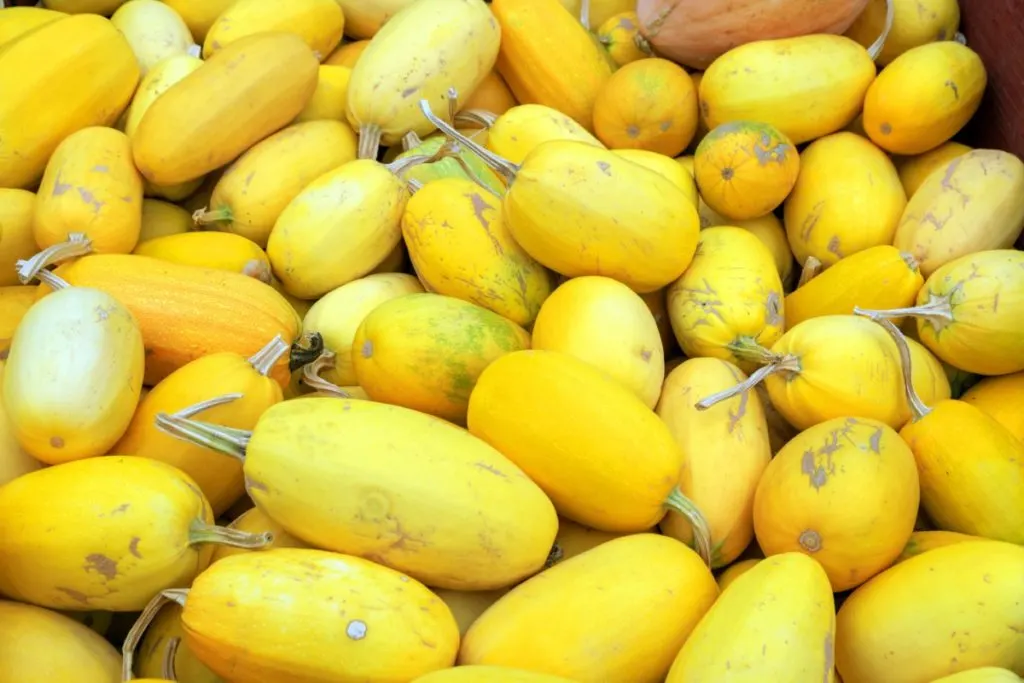
This popular winter squash is a low-carb lover’s best friend, as it can easily replace pasta. When you cook the flesh, you get tender spaghetti-like strands of squash. These oblong squash come in a pale or bright yellow and even orange.
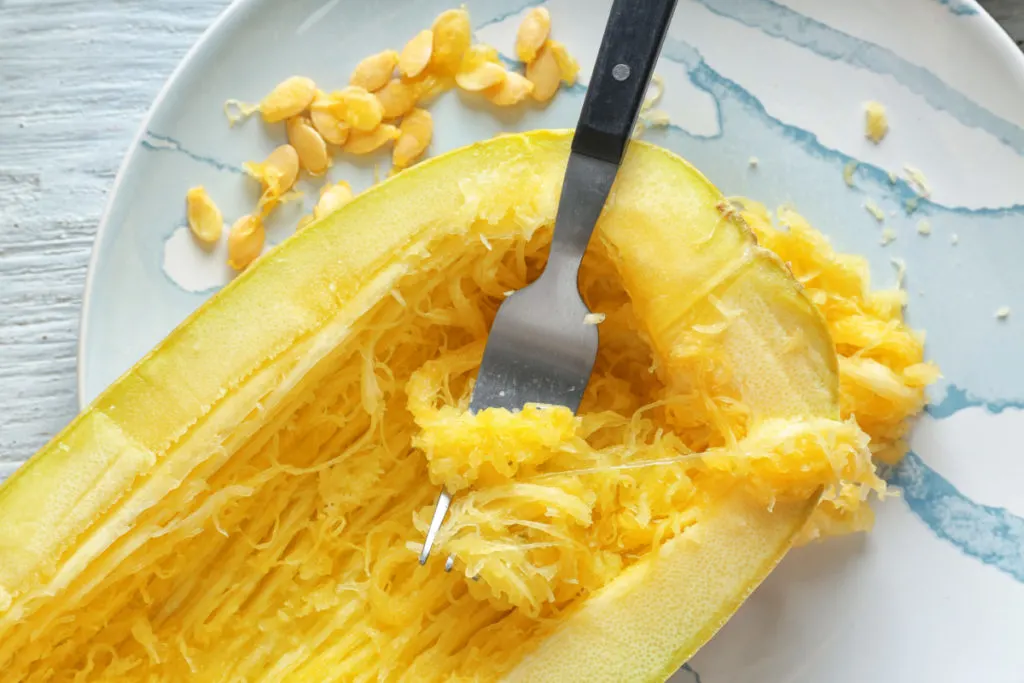
They are a wonderful gluten-free option instead of pasta. But don’t stop there; give these delicious spaghetti squash fritters a try too.
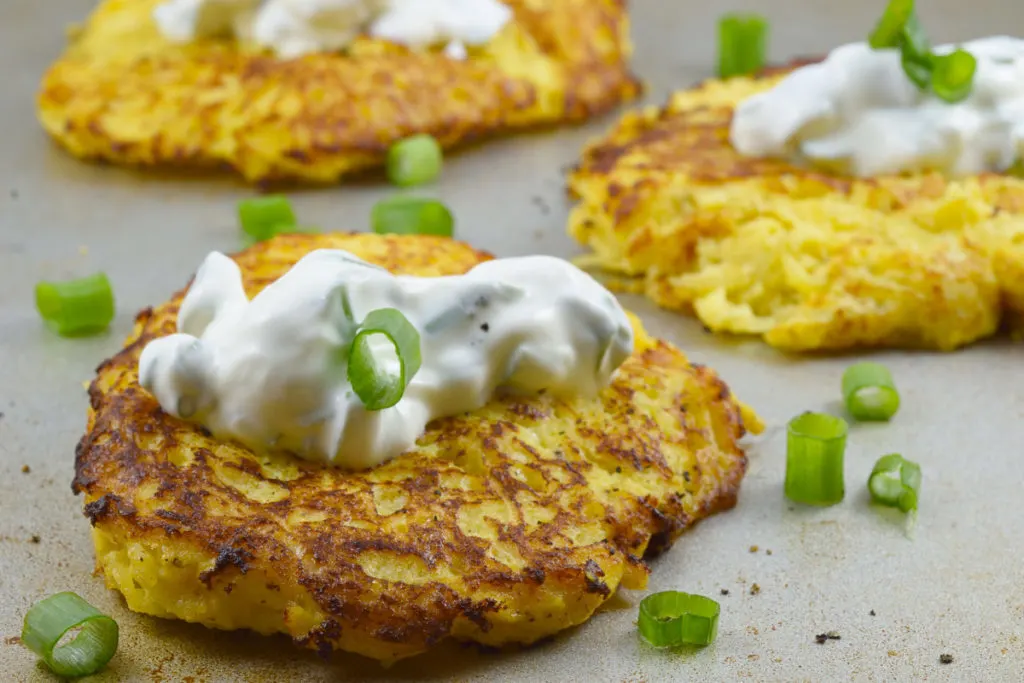
7. Blue Hubbard
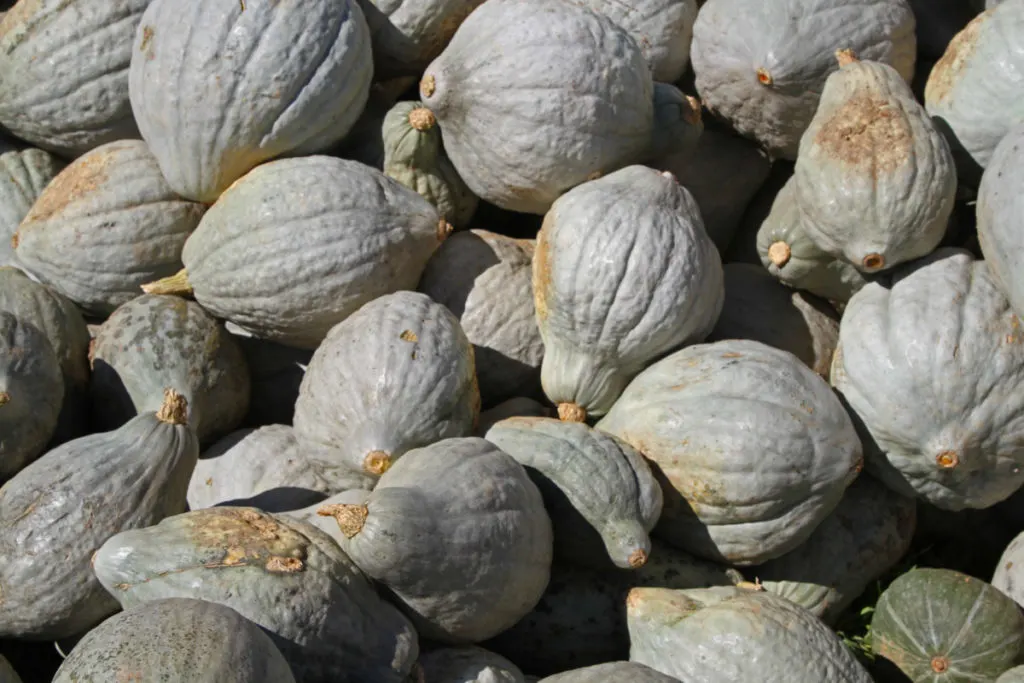
This might be one of my favorite winter squash. They have a unique flavor and bright yellow flesh. Most folks treat them as purely ornamental, putting them on their front porch each fall, but they don’t’ know what they’re missing out on.
One of my favorite things about the New England blue hubbard squash is how long they last. They have extra thick skin, and I’ve cracked them open to cook in late February before.
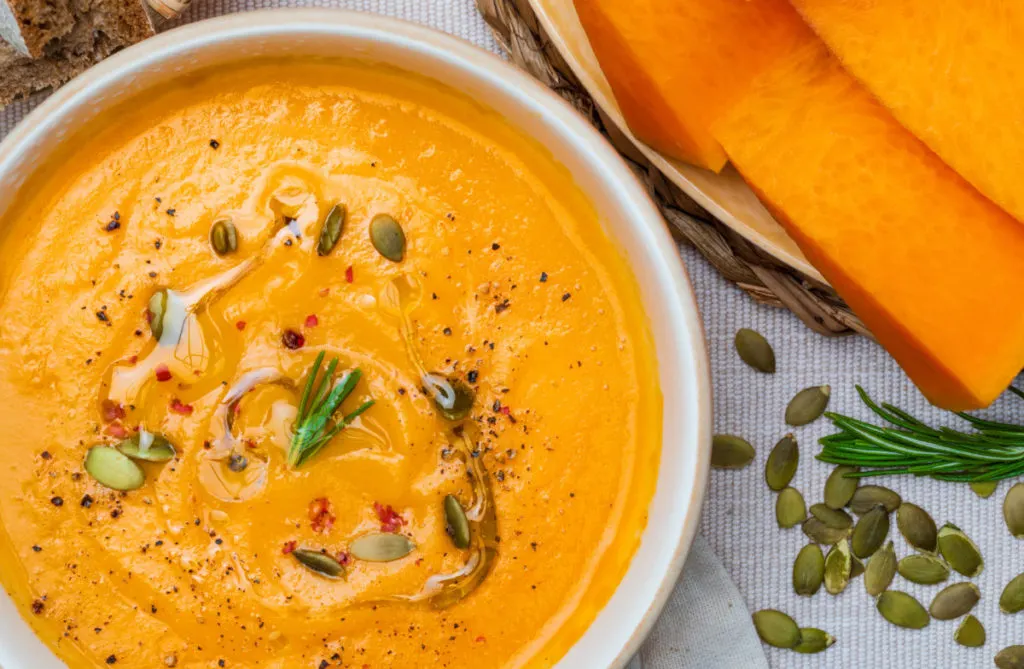
If you’ve got one mixed in with your fall décor, grab it and crack it open! You can start enjoying it with this filling blue hubbard squash soup. It will keep you warm during the coldest evenings.
8. Kabocha
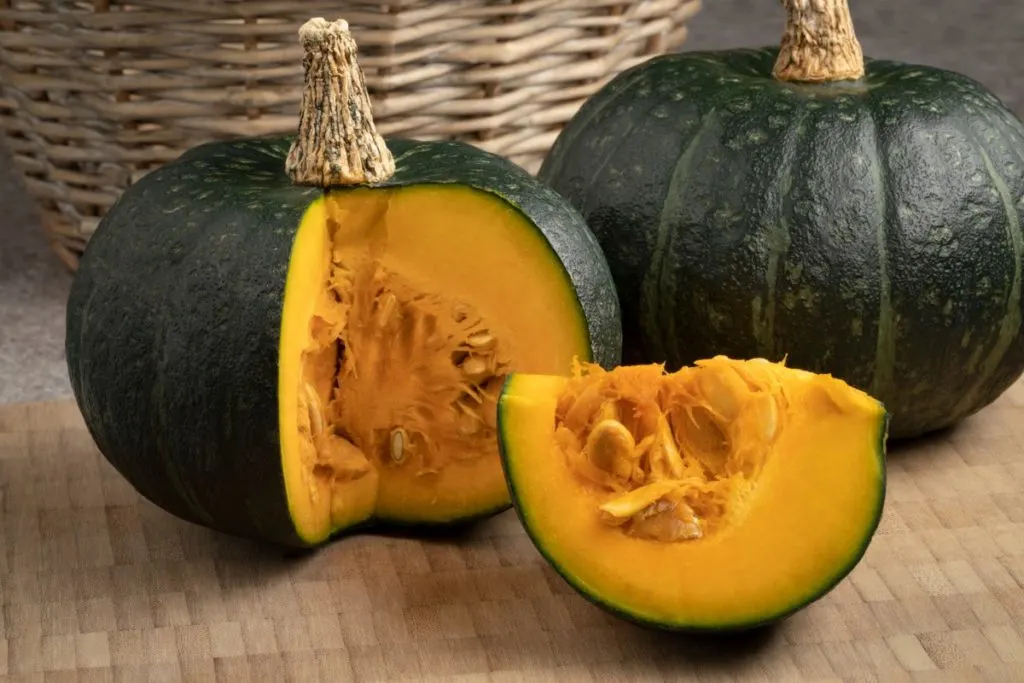
The kabocha squash is also known as the Japanese pumpkin. These tasty squash are used in many Asian recipes. They’re compact and smaller than your average carving pumpkin and larger than a pie pumpkin. When you cut them open, you’ll be surprised by the beautiful brightly colored flesh.
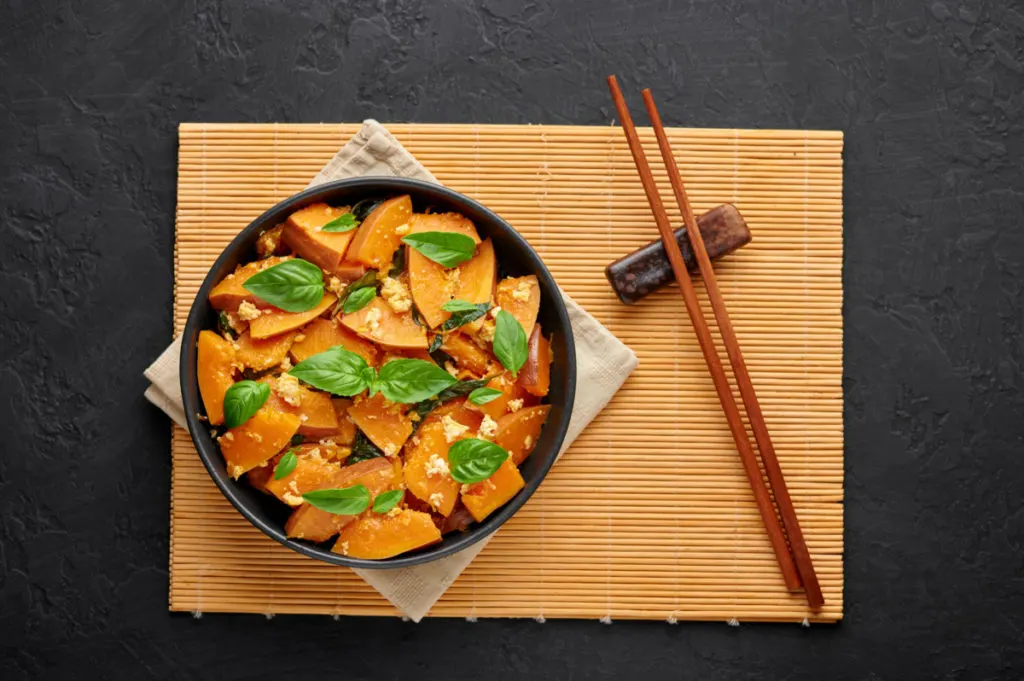
How about a kabocha squash stir fry to introduce you to this tasty green pumpkin?
9. Buttercup
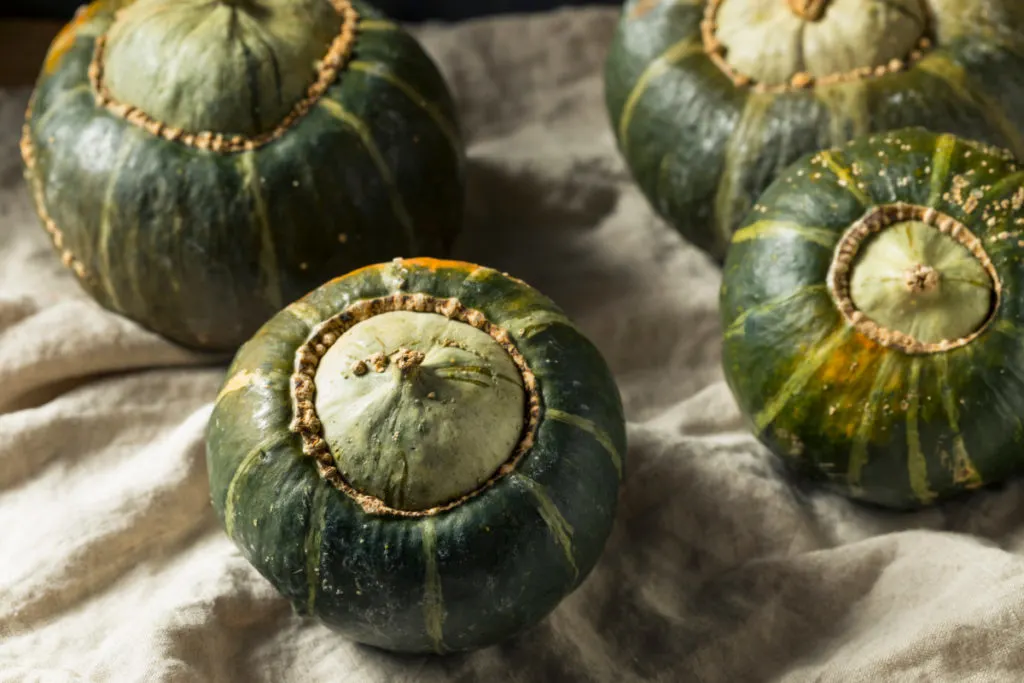
Finally, we have the buttercup squash. They have dark green or orange skin with a bump coming out of the bottom. These funny-shaped squash are a bit more on the sweet side than other winter squash. And that makes them a great candidate for tasty baked goods.
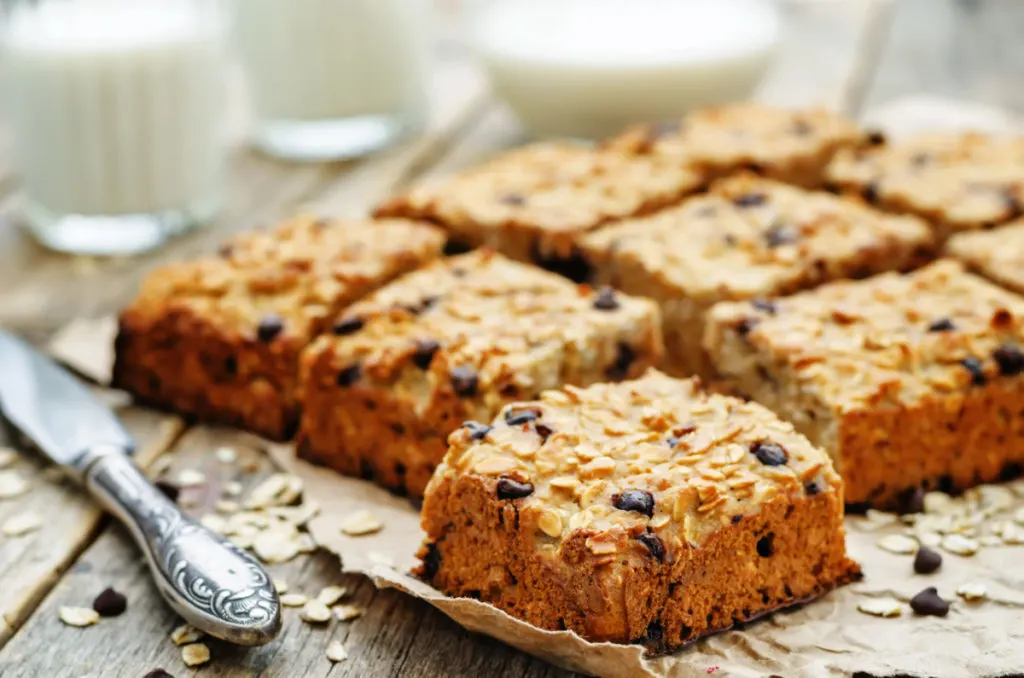
We can’t have a recipe round-up without a dessert on it, so use your buttercup squash to make up a batch of chewy, buttercup squash crumble bars. If you tell the kids they’re made with squash, you won’t have to share them, and you can eat them all by yourself.
Grow Winter Squash
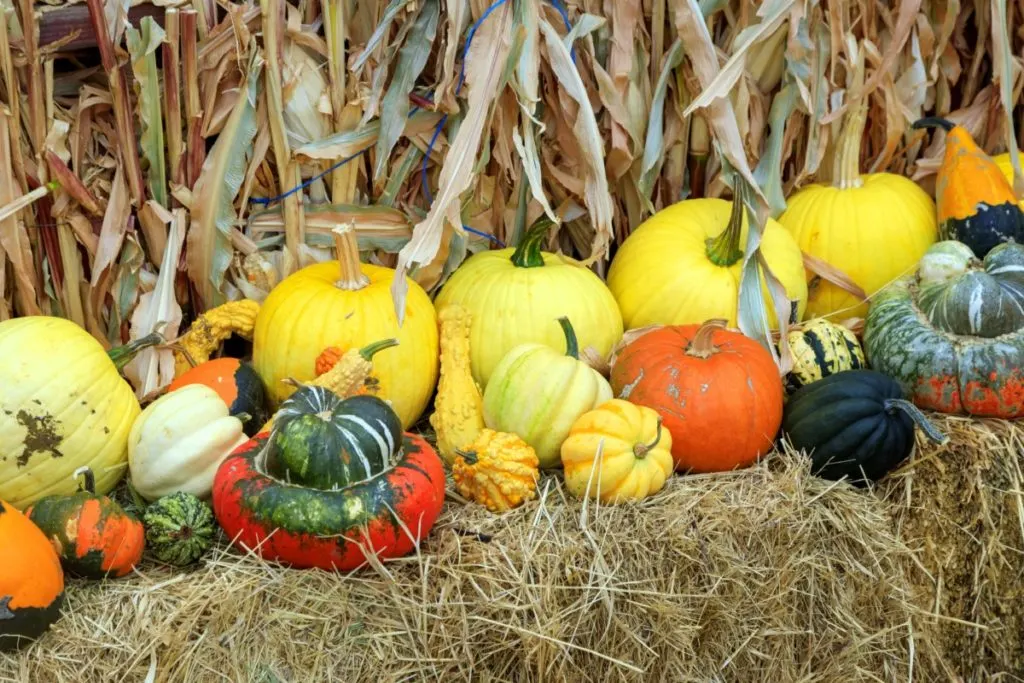
I encourage you to grow your own winter squash next spring. There are so many interesting varieties to try. I’ve barely scratched the surface with this list. A great way to sample them is to choose a different variety to grow each year. You may find one that’s particularly suited to your area and garden.
Some of the smaller varieties can even be trained to grow vertically if space is a concern.
If you know you won’t be able to use them all (they’re usually quite prolific), winter squash is much easier to share with friends than zucchini.
And of course, don’t forget to save seeds to grow more the next year. You can use the same method in my article about how to save pumpkin seeds.
Pumpkin Seeds – How to Save and How to Toast

Get the famous Rural Sprout newsletter delivered to your inbox.
Including Sunday ramblings from our editor, Tracey, as well as “What’s Up Wednesday” our roundup of what’s in season and new article updates and alerts.

